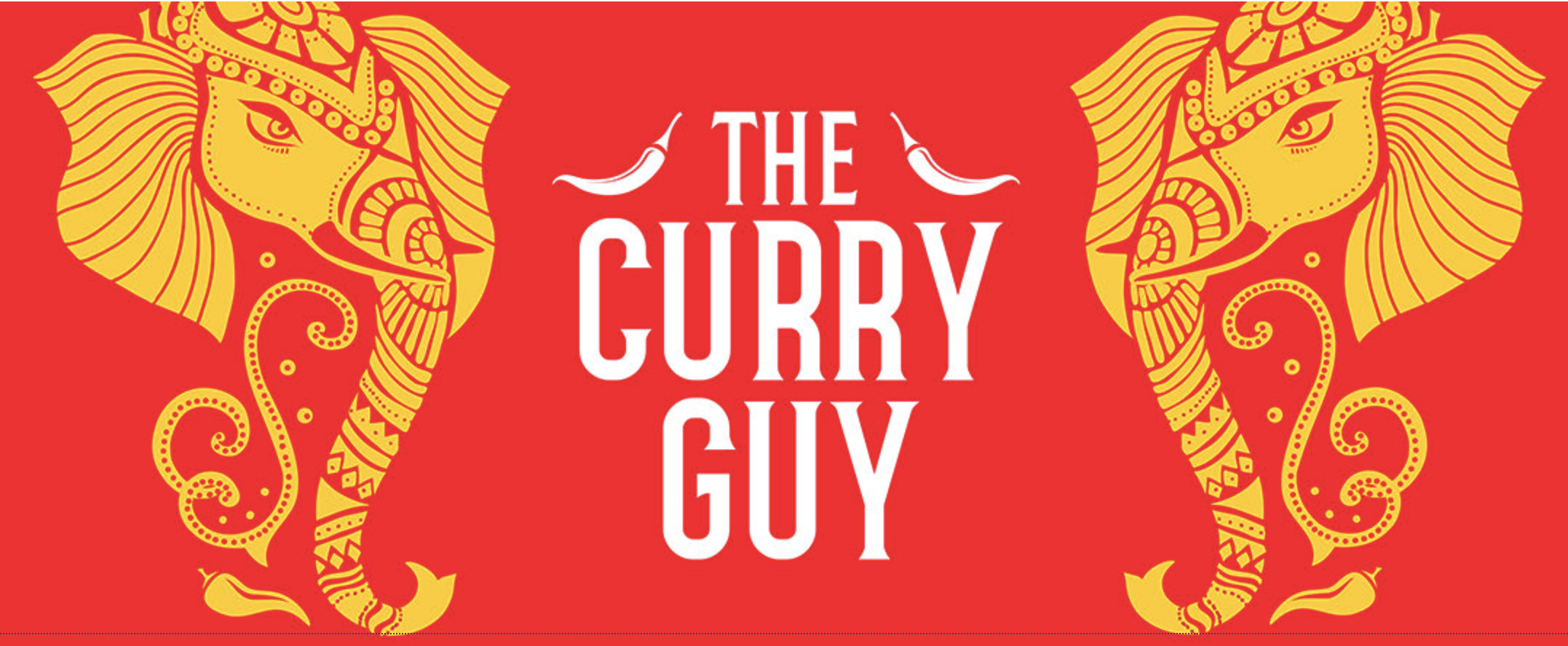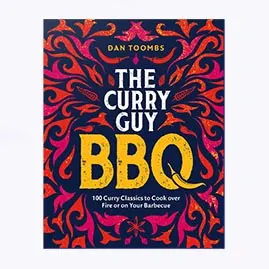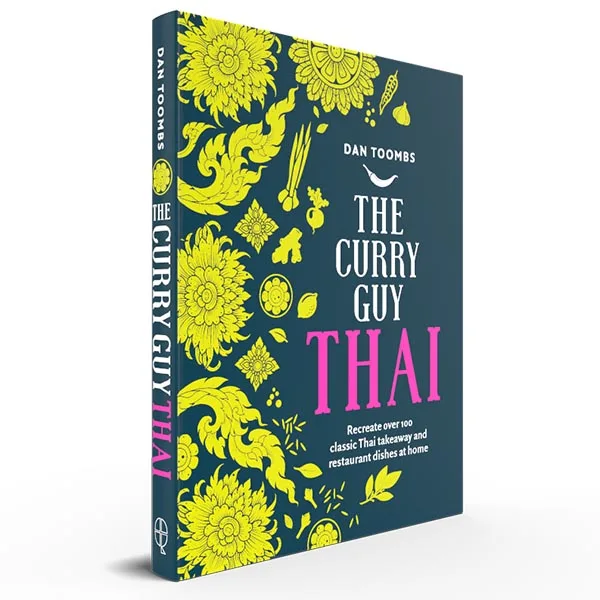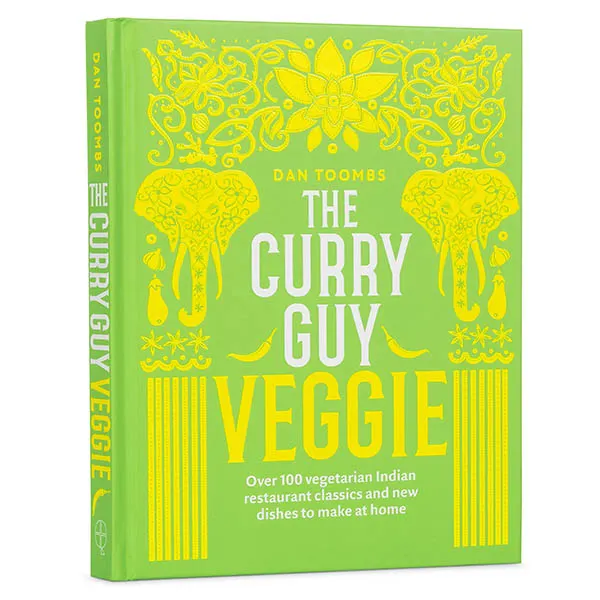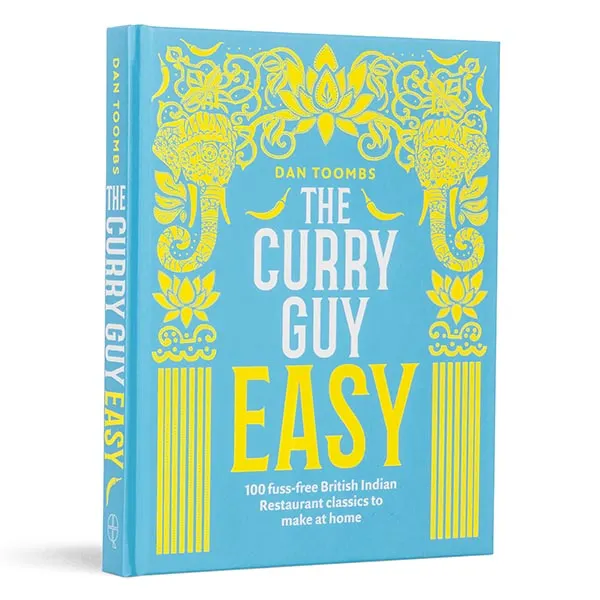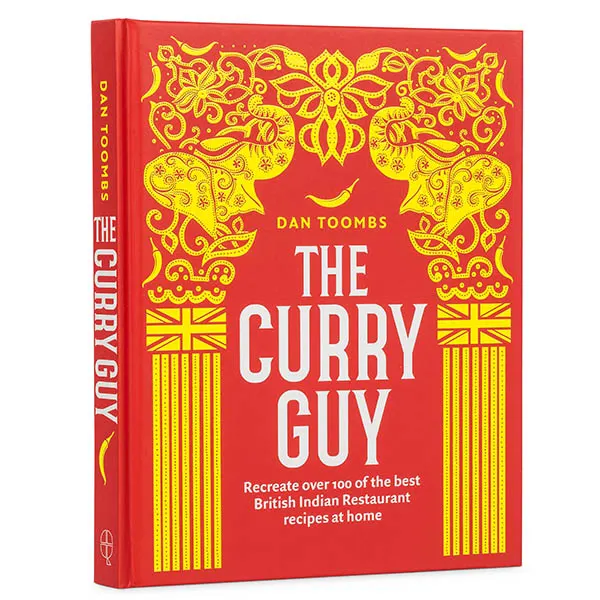Beef Nihari is slowly cooked in one pot. It might just be the perfect one pot meal.
Nihari curries can be made with any cut of meat. Lamb, mutton, chicken and goat are all popular options but beef nihari is now my personal favourite. I made this while visiting family in California. Before that, I had only tried the recipe with lamb and mutton shanks but these are not very easy to come by in California.
So I tried it with Thor hammer cuts of beef shank and the result was out of this world!

Just top this beautiful beef nihari with you toppings of choice. So good!
What is beef nihari?
Niharis are traditional, slowly cooked stews. Caroline and I tried our first nihari in northern India which was prepared with mutton. I’ve since learned that the Pakistani nihari is most often prepared with beef which is why I wanted to give it a try.
The word ‘nihari’ is an Arabic word which means ‘early morning’ or day. Traditionally, niharis were cooked over a small fire overnight and then enjoyed the next day after morning prayers. These days, you can enjoy a beef nihari for breakfast, lunch or dinner. Personally, I do prefer it for dinner but it does make a good breakfast for real curry fans.
It’s believed the the first nihari curries were prepared in Mogul, New Delhi. The meat and its, thick, delicious sauce was served with naans or rotis to Newhab workers to fill them up for the day.
What is different about Nihari curries?
I learned to make mutton nihari from a Pakistani chef friend. One thing he stressed is that this was easy food. Where normally, the spices for curries are first roasted, nihari curries call for whole spices that are ground to a powder without roasting.
Because tougher cuts of meat are normally used, this curry is slowly cooked for a long time. This recipe calls for a three hour cooking time so that the meat becomes really tender and the marrow bones have time to really flavour the stock.
As I mentioned above, beef nihari as well as mutton nihari were cooked over a low flame overnight for optimum flavour but 3 hours will do the job just fine.
Working ahead…
When you think about the traditional long cook of beef nihari, you can imagine why I usually cook this dish the day before serving.
Not only does this make things easier, but letting the meat and bones sit in the stock overnight also improves the flavour. It’s more intense and a lot more tasty too.
If doing this, be sure not to add the flour mixture until you reheat it. Then just add it in small amounts until you are happy with the consistency of the sauce.
Using shop bought nihari spice blends…
Who enjoys a beef nihari?
Pretty much anyone who enjoys beef will love a beef nihari. Unlike many similar curries, beef nihari is not really spicy at all. This means all beef fans can enjoy it.
The mild beef nihari is served at the table with a selection of garnishes which usually include, chopped, fresh chillies, chopped coriander (cilantro), lemon wedges and julienned ginger.
You can spice it up to your preference. The fresh chillies and mildly spicy ginger do a great job at that.
Beef Nihari in pictures…
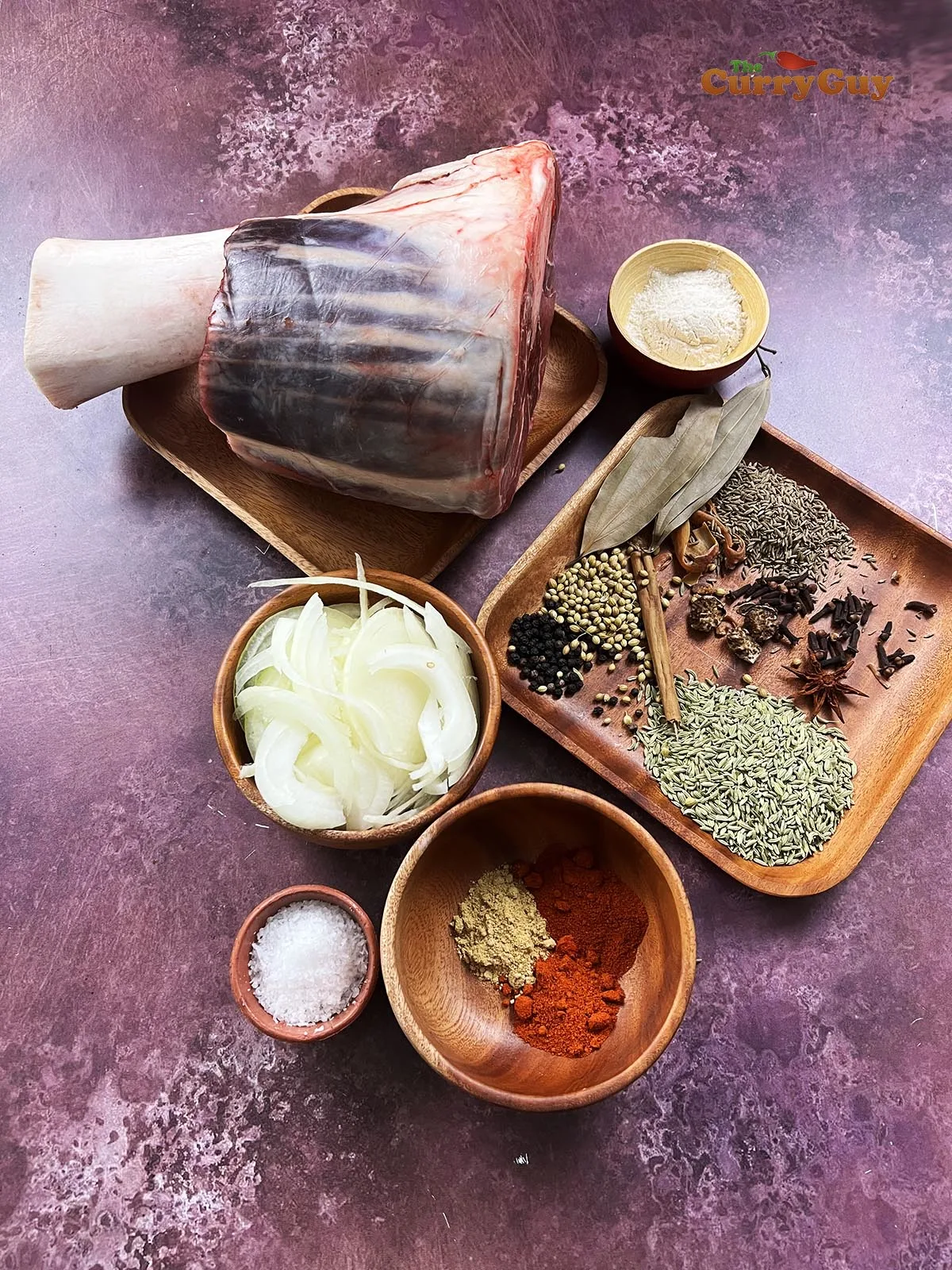
Get your ingredients together before starting. It’s easier that way.
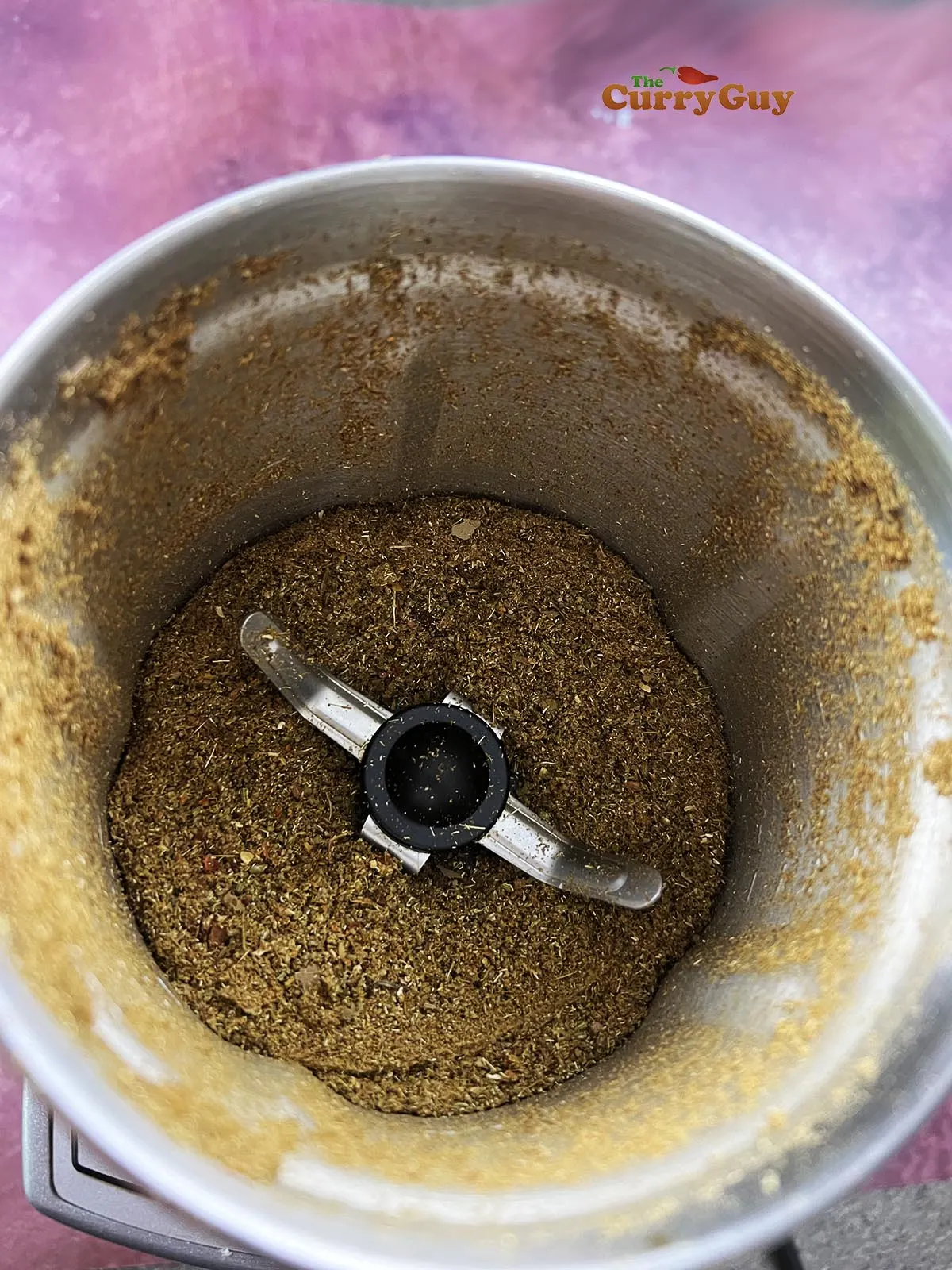
Grind the spices to a powder.
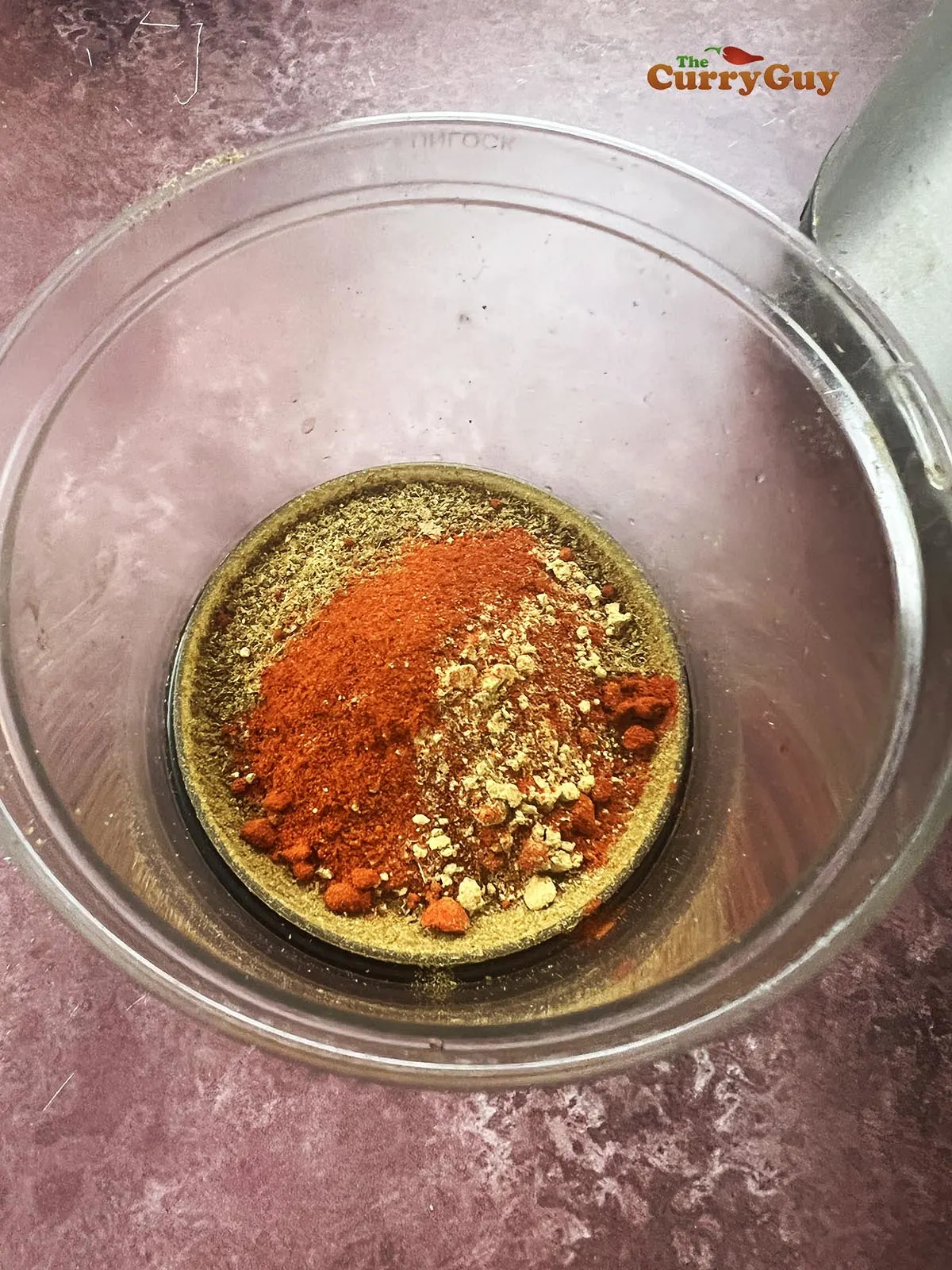
Mix these ground spices with the chilli powder, paprika and ground ginger.
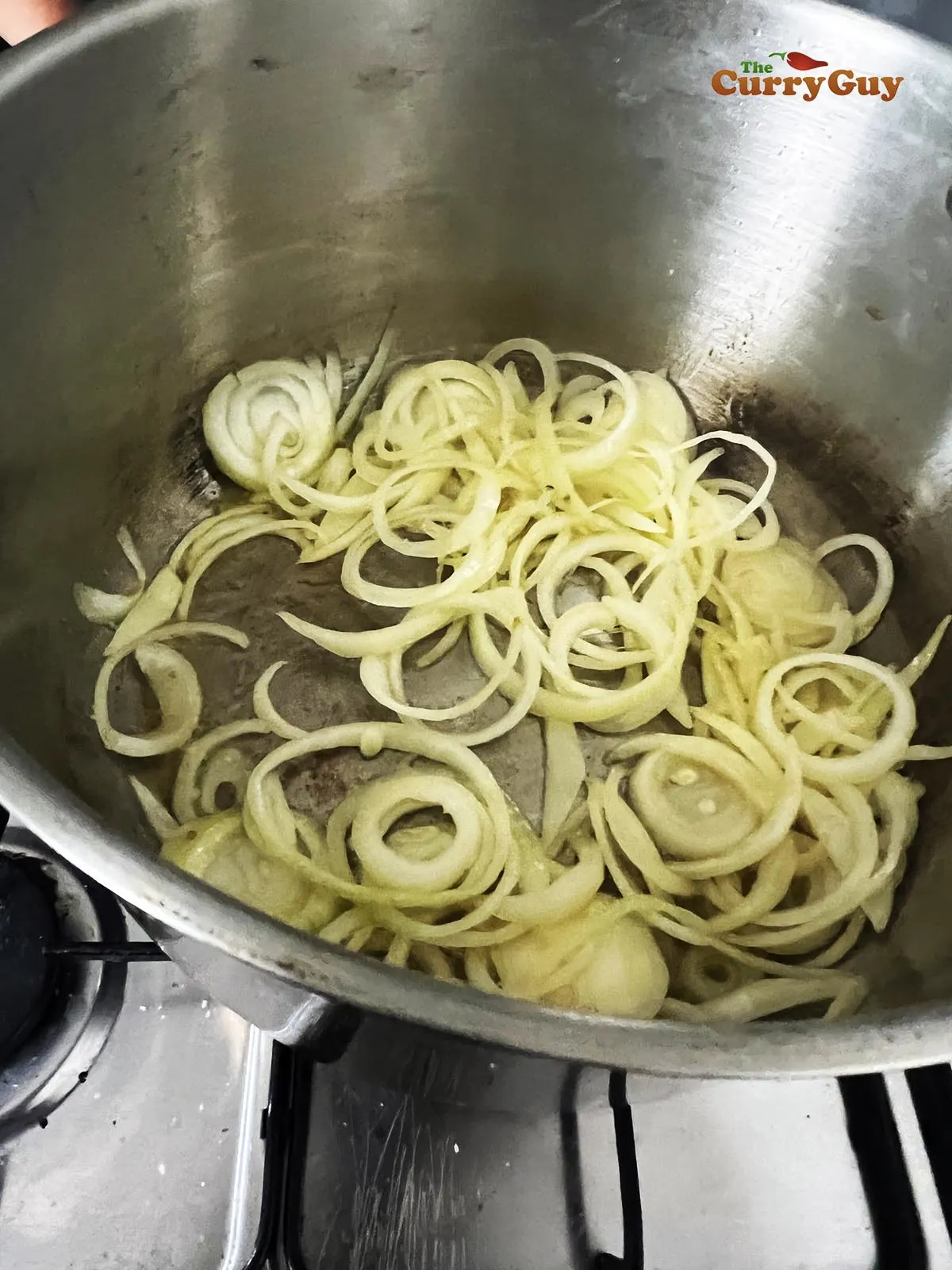
Now fry the thinly sliced onion for about 5 minutes in the ghee until soft and translucent.
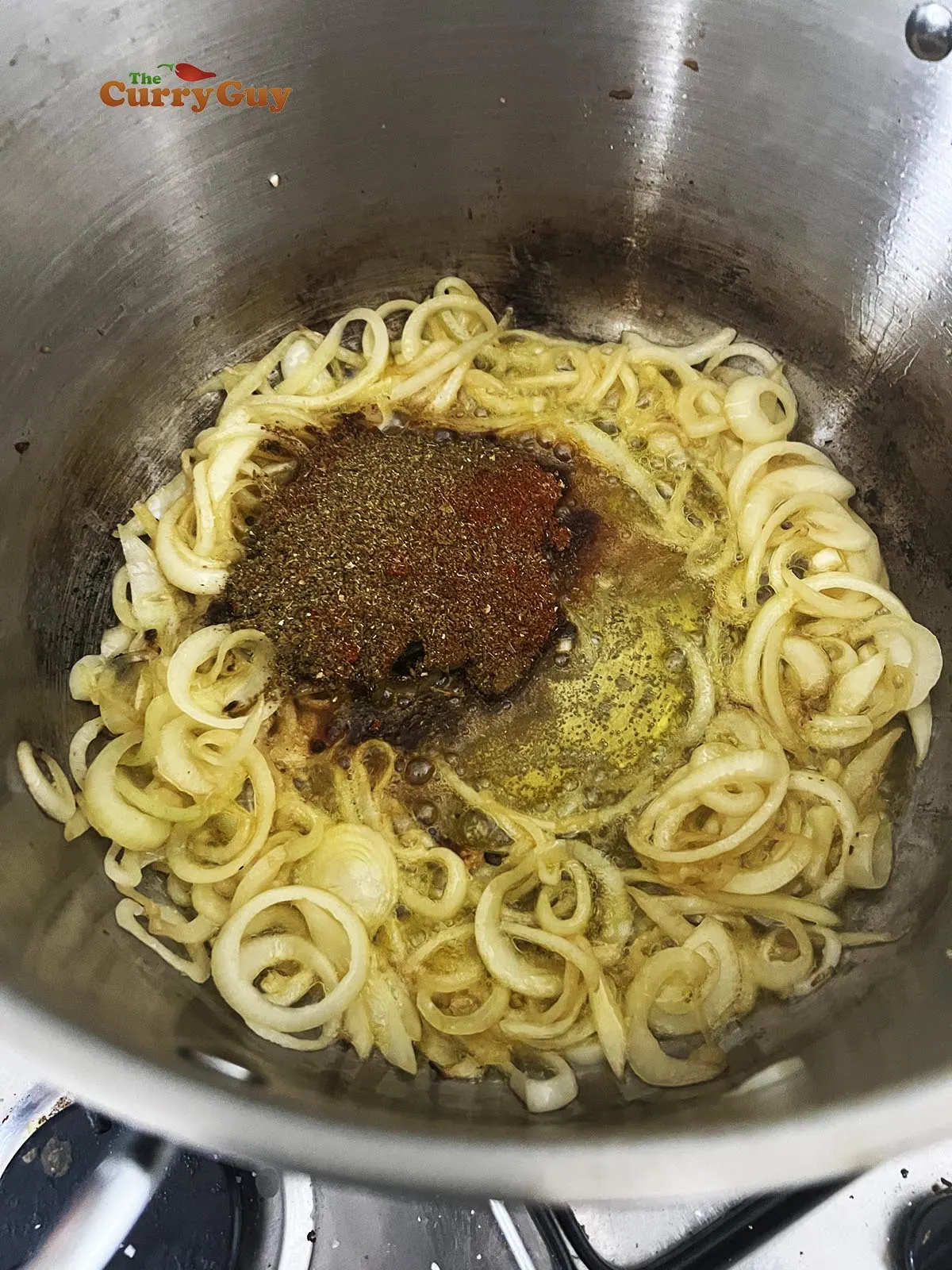
Add the ground spices to the fried onion and give it a good stir to combine.
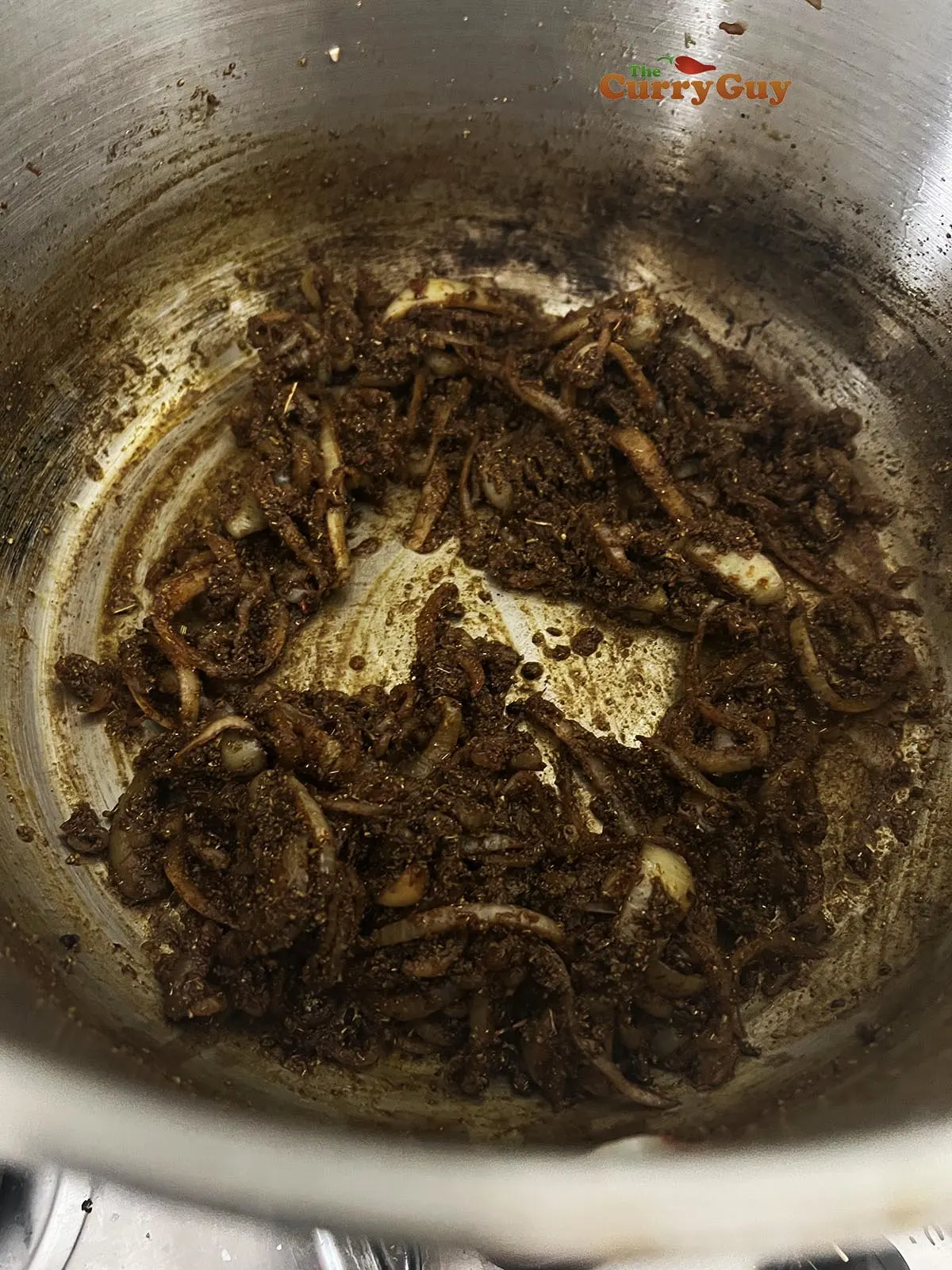
It should look like this. Once well combines, transfer to a plate and set aside.
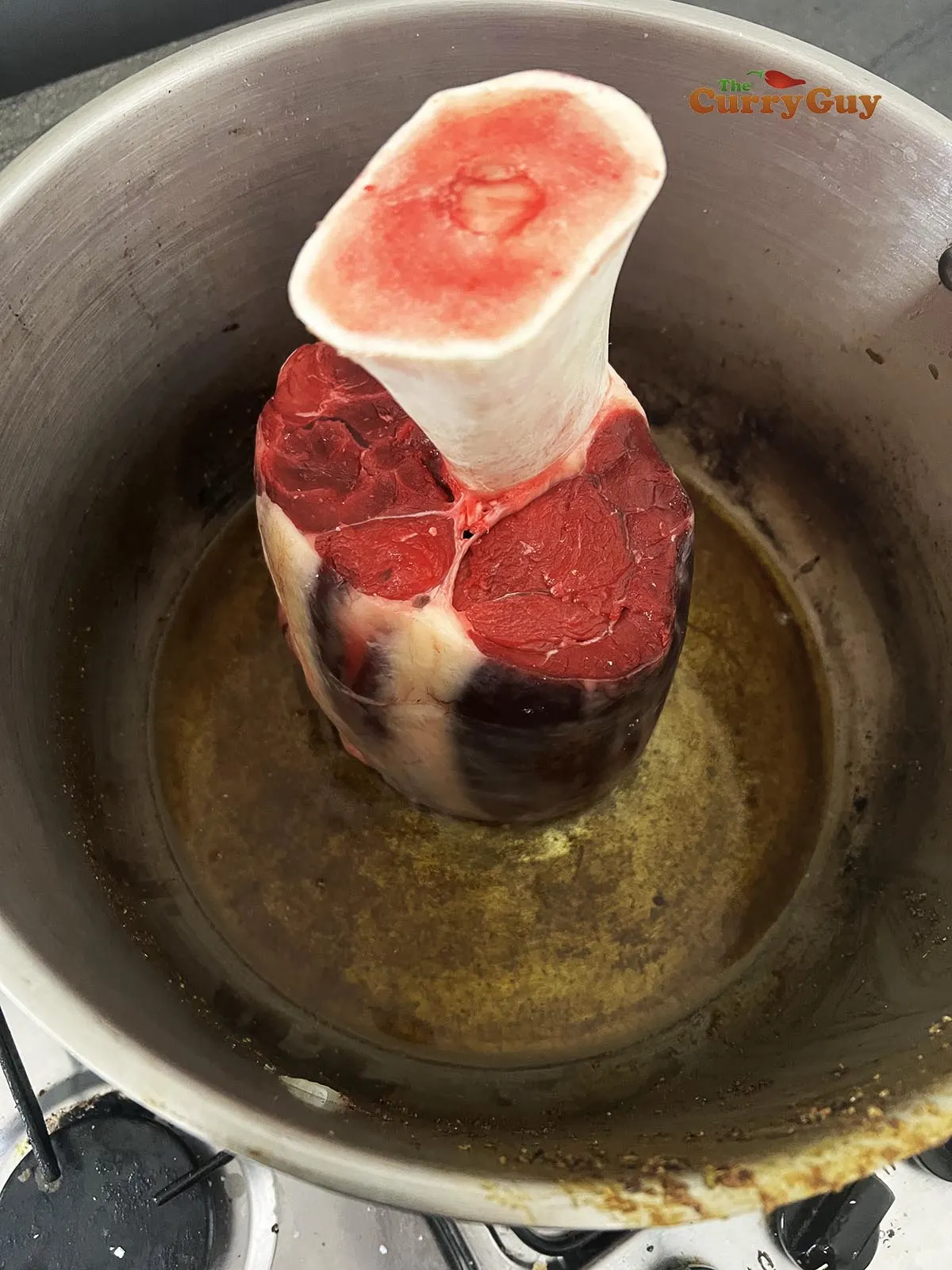
Pour the oil into the pot and sear the meat for a few minutes to brown.

Return the onion mixture to the pot and cover the meat with water, with the bone sticking out.
A note about the step by step photos of this beef nihari recipe…
I was cooking for 16 people, so I actually cooked two beef Thor hammers. I laid them side by side and everything came out perfectly.
To do this, however, I needed to add a lot more water. If using just one Thor hammer, you want to place it meat side down with the bone sticking out. Then just cover the meat with water.
As it cooks, covered, the marrow in that large bone will melt some. Lay it down in the stock about an hour after you start simmering the beef and that amazing marrow will ooze into the stock, flavouring it.
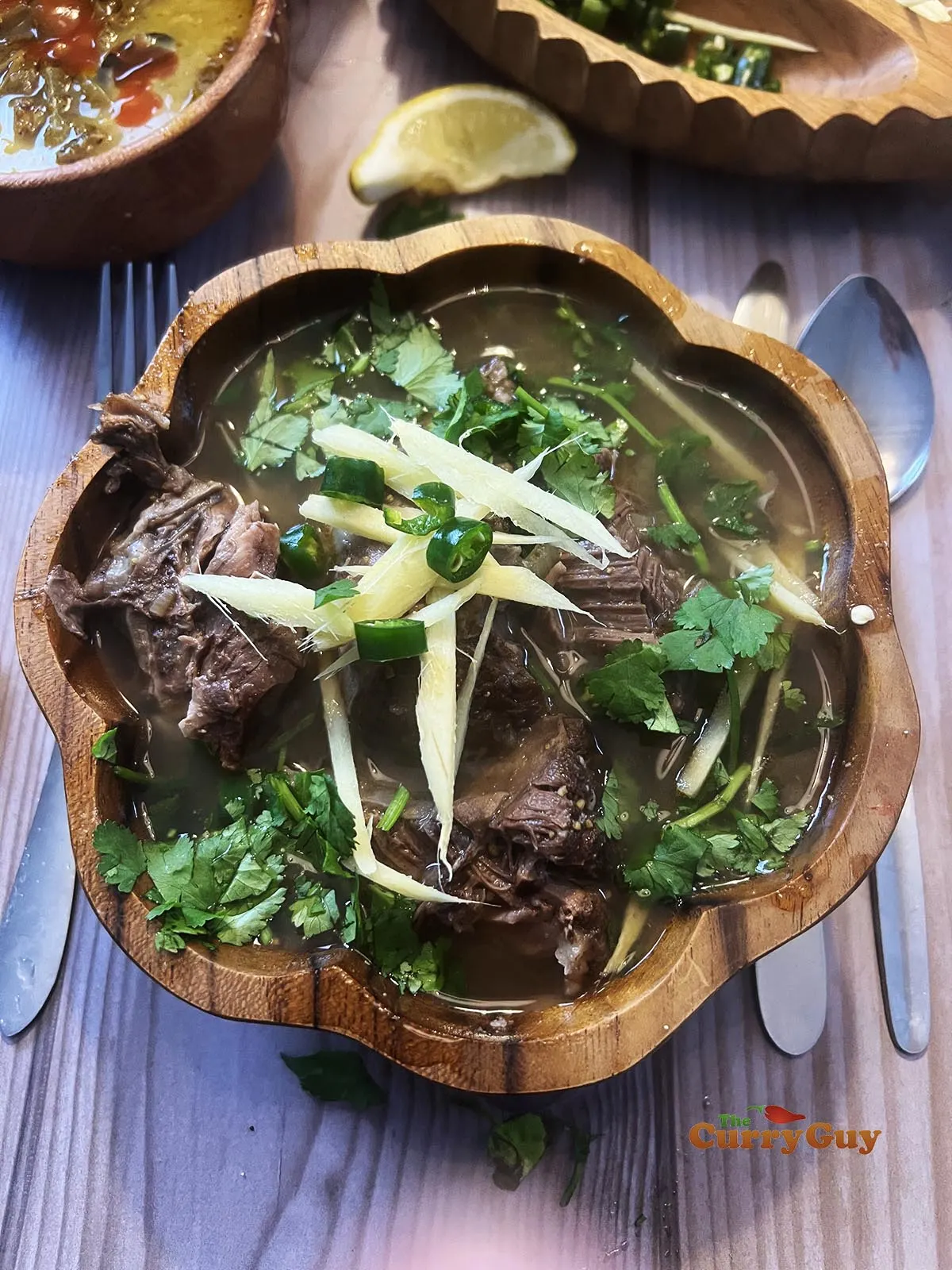
Dig in!
Getting the thickness of the broth right…
Beef nihari is usally quite thick but it doesn’t have to be. I like my beef nihari thick but not as thick as I have seen some made.
This is really down to you and your personal preference. You make it thicker by adding more flour.
I recommend doing this in small amounts as you simmer the stock as it thickens as it simmers.
If you add too much flour, just add a drop of water. If your beef nihari is too thin for your liking, add more of the flour paste in small amounts until it’s perfect.
If you like this beef nihari recipe, you might like to try some of these beef recipes too.
Beef Khao Soy
Chinese Crispy Beef
Beef Pho
Bo Kho
Beef Queso Dip
Beef Madras from Scratch
Rajma Masala – This rajma curry made with kidney beans is the perfect vegetarian side dish.
Beef Nihari
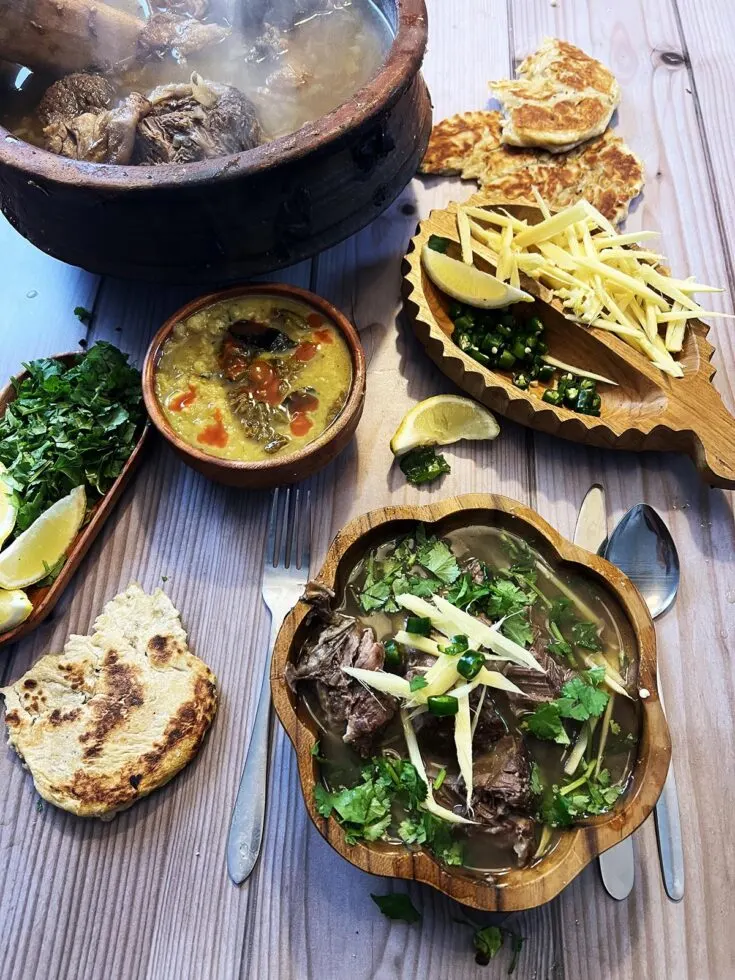
Ingredients
- 1 x 3kg (6 ½ lb) in total, Thor cut of beef or simply beef shanks on the bone
- 1 tsp salt
- 1 star anise
- 1 whole nutmeg, crushed into smaller pieces
- 1 large blade mace
- 2 tbsp fennel seeds
- 3 Indian bay leaves (cassia leaves)
- 2.5cm (1 in) cinnamon stick or cassia bark, broken
- into small pieces
- 1 tsp black peppercorns
- 1 tsp nigella seeds (black onion seeds)
- 1 tsp cloves
- 1 tbsp coriander seeds
- 2 tsp cumin seeds
- 1 tsp black (royal) cumin seeds (optional)
- 1 tsp paprika
- 1 tsp hot chilli powder
- 1 tsp ground ginger
- 70ml (1/4 cup) ghee or rapeseed (canola) oil
- 1 onion, sliced into rings
- 125ml (1⁄2 cup) rapeseed oil
- 4 generous tbsp (1/3 cup) chapatti flour
- Salt to taste
- TO GARNISH
- 4 tbsp (or more) finely julienned ginger
- 2–3 hot fresh green chillies, finely sliced
- Handful of coriander (cilantro) leaves
- Lemon wedges
Instructions
- Place the beef in a large bowl and sprinkle evenly with 1 tsp salt. Set aside while you prepare the spice masala.
- Put the nutmeg, mace, fennel seeds, bay leaves, cinnamon, coriander seeds, peppercorns, nigella seeds, cloves and cumin seeds in a spice grinder and grind to a fine powder. Stir in the paprika, chilli powder and ground ginger. Set aside.
- Now heat the ghee or oil in a large saucepan that has a tight-fitting lid over a medium heat. Add the onion rings and fry for about 5 minutes until soft, translucent and lightly browned. Stir in the ground spices and mix well to combine. Transfer to a plate with a slotted spoon and set aside.
- Pour the oil into the same saucepan and brown the beef for about 2 minutes over medium high heat. Add the browned onions coated with the spices and pour in enough water to cover the meat.
- Bring to a simmer over a medium high heat and then cover and simmer over a low to medium heat for 3 hours. After 3 hours, transfer about 125ml (1/2 cup) of the stock to a bowl to cool. Carefully lift out the beef into a large, preferably warmed serving bowl. Skim off as much excess oil from the cooking liquid as possible from the sauce and keep it warm.
- Mix the chapatti flour with the cooled stock to make a smooth paste with no lumps. Continue simmering and stir the flour paste in small amounts into the sauce and simmer for 5–6 minutes to thicken. You may not need all the paste. Just stir it in until you are happy with the thickness of the sauce.
- Check for seasoning, add salt to taste and then pour the sauce over the meat in the serving bowl. Serve the garnishes in little bowls on the table to add to the beef nihari as you like.
- Some people like to spoon the warmed oil over the top. It is quite good but I'll leave that idea up to you.
Recommended Products
As an Amazon Associate and member of other affiliate programs, I earn from qualifying purchases.
